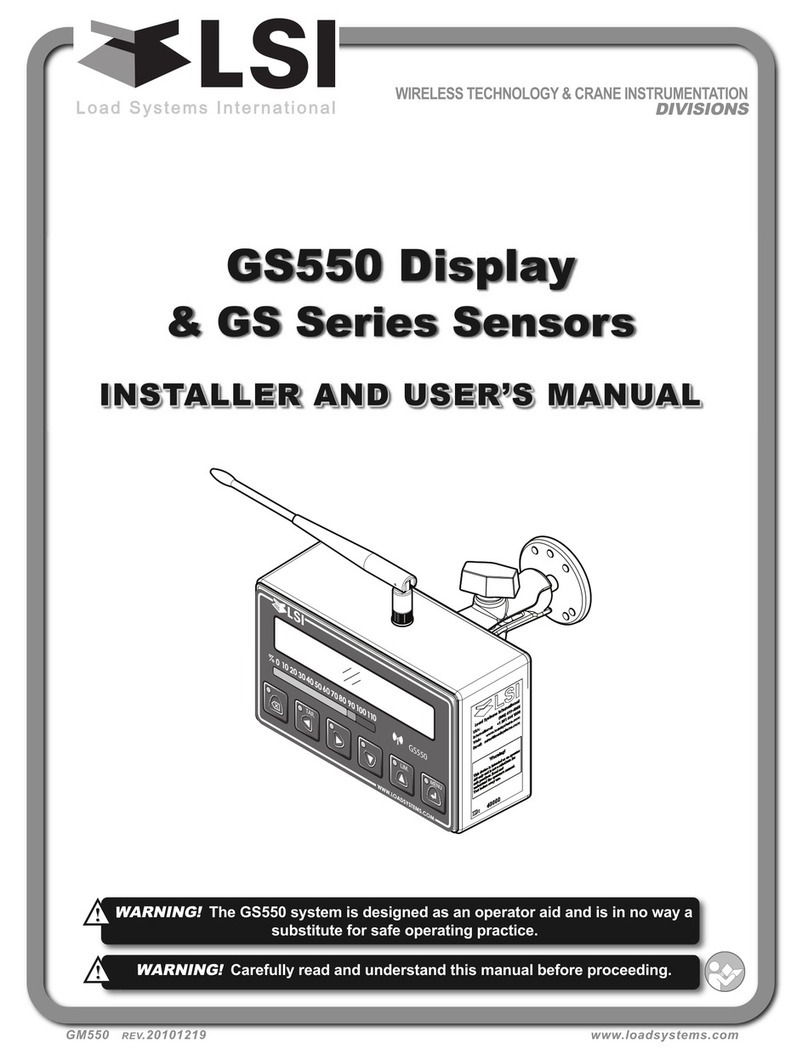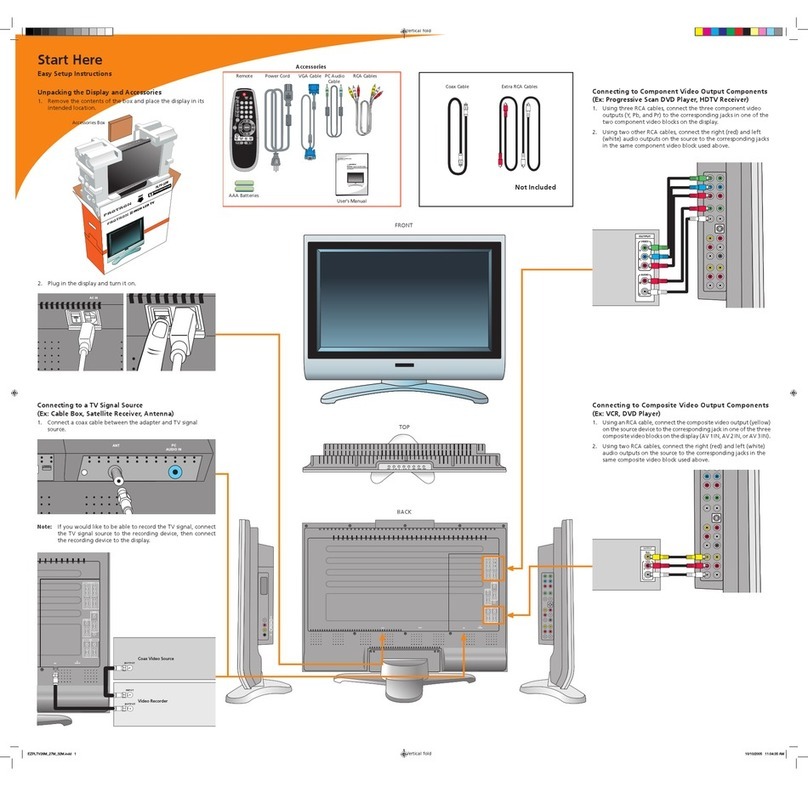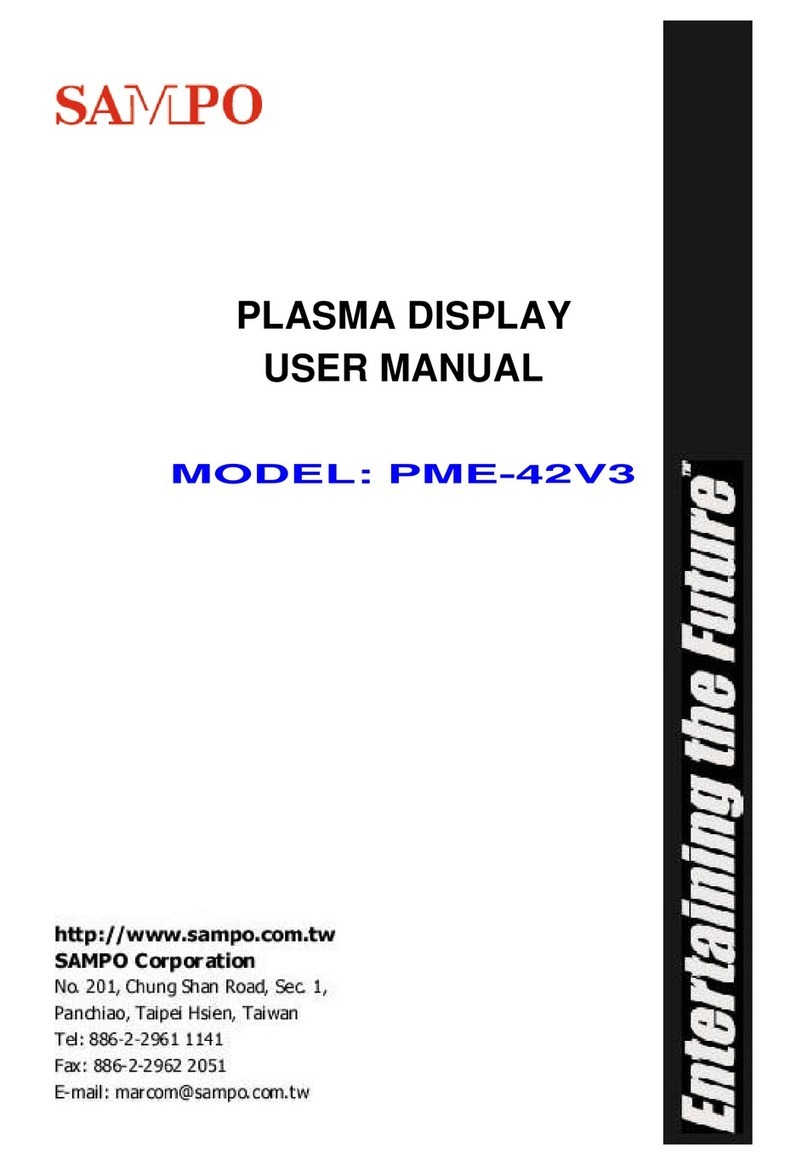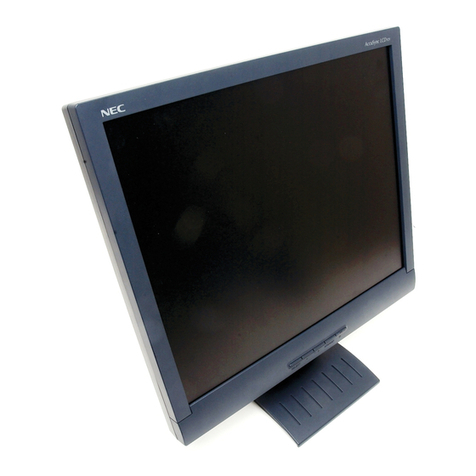LSI GS375 Operation and installation manual

www.loadsystems.com
GS375
Anti-Two-Block
GS375
GS375
Anti-Two-Block
Two-Block
Low Batt
Main Hoist
Two-Block
Aux Hoist
Low Batt
BYPASS TEST
yst
k
B
lock
oadsy
Two-B
l
ww.lo
T
ww
Two-Block
GS375 Display
& Anti-Two-Block
INSTALLER AND USER’S MANUAL
INSTALLER AND USER’S MANUAL
GM375 REV.20090303 www.loadsystems.com
Manufacturers of Wireless
Weighing Systems
WARNING!
The GS375 system is designed as an operator aid and is in no way a
substitute for safe operating practice.
!
!
WARNING!
Carefully read and understand this manual before proceeding.
!
!

2
2The GS375 System
The GS375 System
Read and understand the following:
For your safety and that of the people that come
into contact with LSI
LSI products, understand the
significance of the instructions included in this
guide, respect all laws and regulations and comply
with applicable standards.
Pay particular attention to items bearing the alert
symbol and the following words:
Warning: this denotes an instruction that if not
complied with may lead to serious injury or death.
Caution: this denotes an instruction that if not
complied with may lead to product failure or
property damage.
Important: this denotes an instruction that if not
complied with may lead to product performance
issues.
!
!
IMPORTANT!
WARNING!
!
!
!
!
CAUTION!
!
!
BEFORE PROCEEDING
BEFORE PROCEEDING
WARNING!
Installation must be made in
compliance with LSI
LSI instructions and using
supplied components only. Failure to install
all parts, or replacing parts or components
with parts or components not supplied by
LSI
LSI, may lead to system failure, serious
injury or death.
!
!

OPERATIO
OPERATIO 3
3
TABLE OF COTETS
TABLE OF COTETS
1. INTRODUCTION
1.1 OVERVIEW ........................................4
1.2 START-UP ..........................................4
1.3 RECOMMENDED OPERATING
CONDITIONS ....................................4
2. INSTALLATION
2.1 DISPLAY GS375................................5
2.1a Mounting Bracket ........................................5
2.1b Antenna Position ........................................6
2.1c Power Supply and Lockout Connection ......6
2.2 GS050 ANTI-TWO BLOCK SWITCH
AND GS075 ALL-IN-ONE ANTI-TWO-
BLOCK SWITCH AND WEIGHT ......7
2.2a GS050 Installation ......................................7
2.4b GS075 Installation ......................................8
2.2c Chain length adjustment ............................8
3. OPERATION
3.1 SET THE ID NUMBER ....................10
3.1a Manually Set the ID Number -
Procedure № 1..........................................10
3.1b Manually Set the ID Number -
Procedure № 2..........................................10
4. MAINTENANCE
4.1 REPLACING THE ANTI-TWO-
BLOCK BATTERY ..........................11
4.1a Replacing GS050 Anti-Two-Block Switch
Batteries ....................................................11
4.1b Replacing GS075 All-In-One Anti-Two-Block
Switch and Weight Battery ........................11
4.2 REPLACING THE SENSOR
ANTENNA........................................12
5. CERTIFICATION NOTES
5.1 FCC AND IC – INSTRUCTIONS TO
THE USER ......................................13
6. LSI PRODUCT LIMITED
WARRANTY - 2009/02/16
6.1 LIMITED WARRANTY ....................14
6.2 WARRANTY SERVICES
PROCEDURES................................14
6.3 EXCLUSION OF OTHER
WARRANTIES ................................14
6.4 EXCLUSION ....................................15
6.5 LIMITATION OF LIABILITY ............15
6.6 RECOMMENDED PRACTICES ......15
6.7 CHOICE OF LAW ............................15
6.7a Entire Agreement ......................................15
TABLE OF CONTENTS
TABLE OF CONTENTS

4
4The GS375 System
The GS375 System
1.1 Overview
1.1 Overview
The anti-two-block indicator kit includes a GS375
display and one or two wireless anti-two-block
switches. The GS375 creates a two-way radio
network with the anti-two-block(s) to monitor status.
When an anti-two-block switch goes from safe to
alarm condition, the GS375 will activate its alarm
and lockout wires within 0.05 seconds. The lockout
wire can be connected to a relay to block crane
functions such as boom out or hoist up.
1.2 Start-Up
1.2 Start-Up
On power up, the display will take between 5 and
10 seconds to communicate with the anti-two-block
switch(es) it controles. After this period, the main
hoist green light should light up steady. If it still
flashes after 30 seconds, it means communication
is not established. See the section on changing
batteries later in this manual, or the section on
changing ID numbers if the switch has been
changed.
The auxiliary hoist green light works the same as
the main hoist green light, but it applies to the
second anti-two-block switch, if present. The
auxiliary hoist green light will stay “off” if the display
is not programmed to communicate with a second
anti-two-block switch.
1.3
1.3 Recommended Operating
Recommended Operating
Conditions
Conditions
Supply voltage:
9 to 30 volts
Current requirements:
maximum 1 amperes
Output wire voltage:
0 volts or supply voltage - 0.7 volts
Output wire current capability:
0.75 amperes
Operating temperature:
-40°C to +85°C (-40°F to 185°F)
1.
1. INTRODUCTION
INTRODUCTION

ISTALLATIO
ISTALLATIO 5
5
2.1
2.1 Display GS375
Display GS375
2.1a Mounting Bracket
1. Determine the mounting location; the display
may be installed either inside or outside the
cab. It can be mounted on the dash, on a
sidewall, or on the ceiling of the cab. To ensure
reliable radio communication between anti-
two-block switch and the GS375, the
antenna should not be in contact with metal
and should have a direct and clear line of
sight to the sensor antenna. The mounting
bracket requires a flat surface of at least 2.5
inches in diameter on both sides and where the
back of the surface is accessible in order to
tighten the nuts.
2. Drill 1/4 inch boltholes through the mounting
surface with a 1/4 inch bit following either the
two, three, or the four holes configuration.
3. Install the display with bolts. Add washers and lock
nut behind the mounting surface and tighten
sufficiently (bolts, nuts and washers not included).
4. Loosen the wing nut of the bracket arm to adjust
display orientation to facilitate viewing by the
operator and then tighten it back up.
2.
2. INSTALLATION
INSTALLATION
Cab mounting
surface
Wing
Nut
GS375
Anti-Two-Block
GS375
GS375
Anti-Two-Block
Two-Block
Aux Hoist
BYPASS TEST
Two -Block
Figure: Display mounting bracket footprint. Not to scale.
Figure: Install the display and adjust orientation
GS375
Anti-Two-Block
GS375
GS375
Anti-Two-Block
Two-Block
Low Batt
Main Hoist Aux Hoist
BYPASS TEST
A
oist
Main Hoist
Two- Block
Low Batt
Mai
6.19
4.70
1.37
Adjustable
Ram-Bracket
with dual ball joints.
Part number: LB002B
Rugged
aluminium
enclosure
Two way radio
system
Waterproof
design
Field replaceable
antenna
Part number: TA008
2.20 6.49
3.70
8.83
2.44
www.loadsystems.com
GS375
Anti-Two-Block
GS375
GS375
Anti-Two-Block
Main Hoist Aux Hoist
BYPASS TEST
4
4
4
.
7
0
70
www.loadsyste
ms.co
m
M
a
i
n
H
o
i
s
t
Aux Hoist
Figure: Display GS375
Figure: Display dimensions (inches). Not to scale.
0.750 0.750
0.906
ø0.218
ø2.5 in. min.
flat surface
120° TYP
0.594
0.594
IMPORTANT!
Do not crack or puncture
the membrane fascia. The GS375 display is
splash and rain proof. Waterproofing depends in
part on the integrity of the membrane.
IMPORTANT!
Do not power wash the
display. The GS375 display is not designed to
withstand high-pressure washing devices that
can erode the membrane fascia seal or create
fissures in the membrane fascia. Power washing
the display voids warranty coverage.
!
!
Note: If the nuts are on the outside of the cab,
caulk with silicone between the washers and the
cab to prevent water entry.
WARNING!
Installation must be made in
compliance with LSI
LSI instructions and using
supplied components only. Failure to install
all parts, or replacing parts or components
with parts or components not supplied by
LSI
LSI, may lead to system failure, serious
injury or death.
!
!

6
6The GS375 System
The GS375 System
2.1b Antenna Position
For optimal performance the antenna should be
positioned on its side such that it is parallel to
the sensor antenna (but not pointing directly to or
directly away from it).
1. Adjust the antenna position with the articulating base.
2. The antenna should have 5 inches of clear
space all around it.
3. The antenna should have an unobstructed line of
sight to all sensor antennas at all boom angles.
2.1c Power Supply and Lockout
Connection
1. Connect the blue wire (ground) to the negative
terminal of the battery or the panel connection;
alternatively bolt the blue wire to the body of the
machine with a 1/4 inch or 5/16 inch bolt. The
ground connection must be strong enough to
sustain 3 amperes.
2. Connect the red wire to a fused accessory
source, rated at least 3 amperes, that supplies
+12 or +24 volts when the machine is in use.
The GS375 will automatically detect the voltage
level and adjust itself.
3. Lockout wire (if required): connect the green
wire to a Bosch relay coil terminal. Connect the
other coil terminal of the relay to the ground.
When in alarm, the green wire will energize at
the battery positive level.
Current over 1 ampere on the green wire
triggers an auto re-settable fuse. Current flow
will resume several seconds after the short
circuit is eliminated.
n.c.
n.o.
co
Power Supply
or Battery
+12 V or +24 V
Blue
wire
Red wire
Green wire - Lockout
To valve coil if
normally open is
required
← To GS375
To valve coil if
normally closed
is required
Bosch relay
Figure: Connection with green wire lockout and recommended
Bosch relay.
Troubleshooting: if no voltage is present on the
green wire remove the load connected to it.

ISTALLATIO
ISTALLATIO 7
7
2.2
2.2 GS050 Anti-Two block
GS050 Anti-Two block
Switch and
Switch and
GS075 All-In-One Anti-Two-
GS075 All-In-One Anti-Two-
Block Switch and Weight
Block Switch and Weight
Verify the anti-two-block switch is programmed to
the GS375 display. Switches shipped with displays
are pre-programmed in the factory. Test: if the
switch has been programmed to the display then
the display will go in to two-block alarm when the
wire rope of the switch is released. Press Bypass
to silence the alarm until the next two-block event
or simulation. If the switch has not been
programmed to the display, this should be done
before proceeding with installation. See the section
3.1 Set the ID Number.
2.2a GS050 Installation
1. Position the sensor mounting bracket. To
ensure that the sensor can pivot securely on the
mounting bracket throughout the full range of
boom angle, the mounting bracket must be
positioned at a 30° from horizontal with the
boom parallel to the ground and such that the
locking pin of the mounting bracket points up.
Bolt or weld securely.
If the head sheave diameter is between 8 and 16
inches (20-41 centimetres) then two mounting
brackets will be required to permit both live and dead
end mounting.
ø0.38
Pivot Center
(Anchor shaft)
30°
2.50
2.125
0.375 0.25
2.5
1.9375
0.75
Up to 8 in. (20 cm)
diameter Boom
base
Mount bracket below
and behind sheave
center.
Figure: Anti-two-block switch placement on a telescopic boom
Figure: Bracket footprint and orientation,
All dimensions are in inches. Not to scale.
8-16 in. (20-41 cm)
diameter Boom
base
Mount bracket 4 in.
(10 cm) below sheave
center.
Figure: Anti-two-block switch placement for live end mounting
on a lattice boom
8-16 in. (20-41 cm)
diameter Boom
base
Dead
end pin
Mount bracket 4 in.
(10 cm) in front of the
dead end pin.
Figure: Anti-two-block switch placement for dead end
mounting on a lattice boom
WARNING!
Keep the anti-two-block switch
away from the boom and any connecting
metal structures when welding mounting
brackets to the boom. Proximity to welding
may cause permanent damage to the anti-
two-block switch and render the anti-two-
block system unsafe.
!
!
IMPORTANT!
To ensure reliable radio
communication between the anti-two-block
switch and the GS375 display the following
conditions must be respected:
• The antenna of the anti-two-block switch
should not be in contact with metal.
• The anti-two-block switch antenna should
point to the left or to the right of the boom;
it should not point directly to, or away from,
the GS375 display.
• The anti-two-block switch antenna should
have a clear line of sight to the GS375
display; in most cases this means mounting
the sensor on the same side of the boom as
the operator's cab.
!
!

8
8The GS375 System
The GS375 System
For live end mounting on multiple sheave blocks
with sheaves greater than 16 inches (41
centimetres) in diameter consult your service
representative.
For fast line weight installation place the anti-two-
block switch mounting bracket directly below the
sheave center as low and as close to the edge of
the sheave as possible. Place the fast line weight
mounting bracket on the opposite side of the
sheave with the chain hole pointing down and lined
up opposite the pivot of the anti-two-block switch
mounting bracket.
2. Mount the GS050 on the bracket and verify that
the GS050 can rotate freely through all possible
boom movements without being able to come
off the bracket.
3. Install the weight and chain assembly around
the cable and attach the other end of the chain
to the GS050. Tighten all the chain links of the
chain assembly.
4. Adjust chain length as required, see sub-section
Chain length adjustment.
5. Test system function.
2.2b GS075 Installation
1. Optional Bracket: Position the optional mounting
bracket on the boom. Bolt or weld securely.
2. Attach one end of the chain assembly to the
optional bracket or to the boom and the other
end to the eye bolt of the GS075. Tighten all the
chain links of the chain assembly.
3. Remove the hair pin and the clevis pin and
open the back end of the GS075. Install the
GS075 around the cable and then put the clevis
pins (2) back in.
4. Adjust chain length as required, see sub-section
Chain length adjustment.
5. Test system function.
2.2c Chain length adjustment
1. Chain length adjustment № 1 – minimum boom
angle
a. At minimum boom angle, with no
additional weight on the hook block and
one part of line only, lift the boom just
enough to have the hook block suspend
and clear the sensor chain and weight.
b. Hoist slowly until the buzzer sounds. Note
Boom
base
Mount bracket 4 in.
(10 cm) below sheave
center.
Figure: Jib, rooster or other extension; anti-two-block switch
placement for single part of line operation only
Boom
base
Mount bracket directly
below sheave
center as low as
possible.
Fast line
mounting
bracket
Fast line
weight
Anti-two-block
switch GS050
Front View
Chain
hole
Figure: Fast line weight installation
Eye bolt
Clevis pins
Figure: Install the GS075 around the cable
B) Hook block stops
rising, two-block
prevented with
safety margin
Boom
base
A) Anti-two-block
switch triggers
two-block alarm
Boom
base
Figure: Chain length adjustment - Minimum boom angle

ISTALLATIO
ISTALLATIO 9
9
the hoisting distance remaining; this
distance must be great enough to allow
the operator and the lockout system, if
installed, to prevent a two-block event. If
necessary, add chain between the sensor
and weight to increase warning distance.
If still insufficient, contact your service
representative.
2. Chain length adjustment № 2 – maximum boom
angle
a. Raise the boom to the maximum angle.
b. Hoist slowly as described in Step 1.b. Verify
that the warning distance is equal to or
greater than that determined at the
minimum boom angle.
3. Chain length adjustment № 3 – speed test:
Lower the boom until the weight height
becomes visually clear to the operator.
Repeatedly create two-block, progressively
hoisting faster, to ensure that the warning and
lockout work within acceptable amount of time
and distance. Increase the length of the chain if
needed.
B) Hook block stop
s
rising, two-block
prevented with
safety margin
Boom
base
A) Anti-two-block
switch triggers
two-block alarm
Boom
base
Figure: Chain length adjustment - Maximum boom angle
GS075
Increase Increase
GS050
weight
Figure: Chain length adjustment
IMPORTANT!
GS050: to increase chain length, only use
lightweight chain.
!
!

10
10 The GS375 System
The GS375 System
In normal operation, the GS375 display should
indicate one or two steady green lights, depending
if one or two anti-two-block switches are installed.
3.1
3.1 Set the ID Number
Set the ID Number
Complete systems ship with the display and
switch(es) pre-programmed together.
Replacement components may also be pre-
programmed. However, if a display must be
programmed on site two methods are available.
3.1a Manually Set the ID Number -
Procedure № 1
Follow this procedure when the switch is not
installed on the boom. Summary: re-set the switch
with the display in learning mode.
1. Press the Bypass & Test buttons
simultaneously until the display beeps (about 5
seconds). The “main hoist” light will flash, to
indicate that a new main hoist anti-two-block
can be registered.
2. Remove the battery from the main hoist anti-
two-block switch and then re-insert the battery.
The display should detect the new anti-two-
block switch: it will beep and register the new
ID number. The main hoist green light will stop
flashing, the auxiliary hoist green light will start
flashing. Repeat for the auxiliary hoist switch if
required, or press the Bypass button to exit the
learning mode.
3. Test the programmed switch(es) to ensure
the system functions as required.
3.1b Manually Set the ID Number -
Procedure № 2
Follow this procedure when the switch is already
installed on the boom. Summary: simulate repeated
two-blocks with the display in learning mode. Large
numbers of GS series sensors within radio range
may interfere with this method, especially if sensors
are in alarm. In this case Procedure № 1 may be
preferable.
1. Press the Bypass & Test buttons simultaneously
until the display makes a double beep, after
about 10 seconds (ignore the single beep after 5
seconds). The "main hoist" light will flash.
2. Wait 10 seconds; the display is now listening
ready to register a new main hoist anti-two-
block switch. Simulate repeated two-blocks with
the main hoist switch. The switch should
change state, from safe to alarm and back,
several times. The display beeps when the new
main hoist id number has been registered. The
auxiliary hoist light now flashes.
3. The display is now ready to register a new
auxiliary hoist anti-two-block switch. Repeat
two-block simulation with auxiliary hoist switch
if required, or press the Bypass button to exit
the learning mode.
4. Test all programmed systems for correct system
function.
3.
3. OPERATION
OPERATION
www.loadsystems.com
GS375
Anti-Two-Block
GS375GS375
Anti-Two-Block
Two-Block
Low Batt
Main Hoist
Two-Block
Aux Hoist
Low Batt
BYPASS TEST
wo
ww
Tw
ww
ck
T
w
o
-
Bloc
Anti-two-block
battery light
On: indicates that the
battery of the
corresponding switch
is low
Anti-two-block
alarm red lights
Status light;
Steady green: ok
Flashing green:
anti-two-block
not detected
Off: no
anti-two-block set
TEST Button
Press to light up all lights,
activate the alarm buzzer
and lockout wire.
BYPASS Button
Press to momentarily bypass
the crane lockout and
turn off the buzzer if the system
is in alarm.
WARNING!
Test the operation of each anti-
two-block switches installed before every use.
!
!

MAITEACE
MAITEACE 11
11
4.1
4.1 Replacing the Anti-Two-
Replacing the Anti-Two-
Block Battery
Block Battery
4.1a Replacing GS050 Anti-Two-
Block Switch Batteries
1. Remove the anti-two-block from the crane and
clean off dust and grime.
2. Place the anti-two-block on the edge of flat
surface. Use an adjustable wrench to unscrew
the large white nylon hex bolt of the wire rope
about one half-inch.
3. Carefully remove the plunger assembly without
separating it from the cover, and place it on a
clean and dry surface.
4. Slide out the four old batteries.
5. Insert the four new batteries following the
positive - negative schematic printed on the
back of the sensor.
6. Replace the plunger assembly. Correctly align
the bottom cover before screwing in the white
nylon hex bolt of the wire rope. Tighten well.
7. Pull and release the wire rope, the light emitting
diode (LED) on the bottom of the sensor should
flash red.
8. Reinstall the anti-two-block switch.
9. Test the anti-two-block system for alarm and
lockout before operating the machine.
4.1b Replacing GS075 All-In-One
Anti-Two-Block Switch and
Weight Battery
1. Remove the GS075 anti-two-block from the
crane and clean off dust and grime.
2. Unscrew the two screws of the battery cover
and remove the battery cover.
3. Remove the battery by hand.
4. Insert the new battery following the positive -
negative schema.
5. Reposition the battery cover and screw in both
screws.
6. Reinstall the anti-two-block switch.
7. Test the anti-two-block system for alarm and
lockout before use.
4.
4. MAINTENANCE
MAINTENANCE
2
3
A
djustable
wrench
Figure: Remove the plunger assembly
6
5
7
New high quality “C”
cell battery: 3.6 V lithium,
or alkaline
Figure: Install the new batteries and the plunger
IMPORTANT!
Replace all the batteries of
the anti-two-block switch at the same time.
Unchanged batteries will reverse polarity
severely reducing battery life.
IMPORTANT!
Protect the interior of the
sensor from dirt and humidity at all times.
!
!
IMPORTANT!
Do not unscrew the white
nylon hex bolt of the antenna.
IMPORTANT!
Do not unscrew the small
screw to the left of the antenna.
!
!
IMPORTANT!
Class I Div I sensors certified by
CSA or ATEX should use alkaline batteries only.
!
!
New high quality “D”
cell battery: 3.6 V lithium,
or alkaline
Battery
cover
4
2
Figure: Replacing GS075 battery

12
12 The GS375 System
The GS375 System
4.2
4.2 Replacing the Sensor
Replacing the Sensor
Antenna
Antenna
Heavily damaged antennas (ripped out, sheared off,
wire exposed and fraying etc.) should be replaced to
ensure effective communication between the sensor
and the cabin mounted display unit.
This procedure may be followed without removing
the sensor from the crane if it is safe to do so.
1. Place the crane, boom, jib or ball hook such that
the sensor is safely accessible.
2. Clean dust, grime and water from the sensor.
3. Identify the short black whip antenna and the
white hex bolt securing it.
4. Inspect the antenna for signs of obvious
physical damage.
5. Carefully unscrew the white nylon hex bolt
completely and slide it up the antenna.
6. Grip the antenna by the base of the black
plastic sheathing and pull it straight out of the
hole in which it is seated. Place the old antenna
aside.
7. Slide the white nylon hex bolt to the middle of
the length of the new antenna.
8. Coat the exposed metal foot of the new antenna
with an electrical insulating compound by
carefully inserting it in the mouth of the
compound tube.
9. Hold the new antenna by the black plastic
sheathing and guide it through the hole in the
sensor box. Carefully seat the antenna in its
mating connector. When the antenna is
correctly seated, pulling on it will be met with
light resistance.
10.Carefully re-thread, screw-in and tighten the
white nylon hex bolt to secure the antenna in
place. Do not overtighten.
11. Reinstall the sensor if necessary.
12.Verify that the sensor functions properly.
GS050 GS075
55
7/16 in.
wrench
7/16 in.
wrench
Figure: Unscrew the white nylon hex
66
GS050 GS075
Figure: Pull out the antenna
8
Electrical insulating
compound
Figure: Coat the exposed metal foot of the antenna
White nylon hex bolt
TA011 Antenna
Sensor box
Antenna receptacle
Figure: Install the new antenna
IMPORTANT!
The interior of the sensor
must be protected from dust, grime and
water at all times.
!
!

CERTIFICATIO OTES
CERTIFICATIO OTES 13
13
5.1
5.1 FCC and IC – Instructions
FCC and IC – Instructions
to the User
to the User
This equipment has been tested and found to
comply with the limits for a class B digital device,
pursuant to part 15 of the FCC Rules. These limits
are designed to provide reasonable protection
against harmful interference in a residential
installation. This equipment generates, uses, and
can radiate radio frequency energy and if not
installed and used in accordance with the
instructions, may cause harmful interference to radio
communications. However, there is no guarantee
that interference will not occur in a particular
installation. If this equipment does cause harmful
interference to radio or television reception, which
can be determined by turning the equipment off and
on, the user is encouraged to try to correct the
interference by one or more of the following
measures:
• Reorient or relocate the receiving antenna.
• Increase the separation between the equipment
and receiver.
• Connect the equipment into an outlet on a
circuit different from that to which the receiver is
connected.
• Consult the dealer or an experienced radio/TV
technician for help.
In order to maintain compliance with FCC
regulations, shielded cables must be used with this
equipment. Operation with non-approved equipment
or unshielded cables is likely to result in interference
to radio and TV reception.
FCC ID: QVBGS300 IC: 7076A-ICGS300
RF Exposure Warning:
This product complies with FCC/IC radiation
exposure limits set forth for an uncontrolled
environment. To comply with RF exposure
requirements, the unit must be installed and
operated with 20 cm (8 in.) or more between the
product and your body. This product may not be
collocated or operated in conjunction with any
other antenna or transmitter.
This device has been designed to operate with
the antennas listed below, and having a
maximum gain of 2.0 dB. Antennas not included
in this list or having a gain greater than 2.0 dB
are strictly prohibited for use with this device.
The required antenna impedance is 50 ohms.
To reduce potential radio interference to other
users, the antenna type and its gain should be
so chosen that the equivalent isotropically
radiated power (e.i.r.p.) is not more than that
permitted for successful communication.
Antenna List
LSI P/N: . . . .TA008
Description: .1/2 wave dipole
MFG: . . . . . .Nearson
P/N: . . . . . . .S467AH-915S
5.
5. CERTIFICATION NOTES
CERTIFICATION NOTES
IMPORTANT!
Changes or modifications to
this equipment not expressly approved by the
party responsible for compliance could void
the user’s authority to operate the equipment.
!
!

14
14 The GS375 System
The GS375 System
6.1
6.1 Limited Warranty
Limited Warranty
LOAD SYSTEMS INTERNATIONAL INC. (hereafter
“LSI
LSI”) warrants its products (the “Products”), for a
period of twenty four (24) consecutive months after
delivery of such Products to the user (as evidenced
on a LSI
LSI document) (the “Warranty Period”), when
installed and used in accordance with specifications
described in LSI
LSI Installer and User’s Manual, as
amended from time to time , LSI
LSI technical materials
and any related writings published by LSI
LSI with
respect with such Products and any industry
standards, will be free from defects in materials and
workmanship. During the Warranty Period, LSI
LSI or its
designated service representative shall repair, or at
its option, replace any Product that is confirmed to be
defective by LSI
LSI, in its sole discretion, in accordance
with the Limited Warranty Services Procedures
described below.
6.2
6.2 Warranty Services
Warranty Services
Procedures
Procedures
In order to benefit of this-mentioned Limited Warranty
coverages and benefits, the purchaser must notify
LSI
LSI’s customer service or LSI
LSI’s authorized distributor
or representative originally responsible for the sale of
the Products within 10 days of the occurrence of a
suspected defect in materials or workmanship, prior
to the expiry of the Limited Warranty Period in order
to obtain a Return Authorization Number. A proof of
purchase of the Product, such as an invoice or a
receipt certifying the validity of the Warranty, must be
presented in order to obtain Limited Warranty
coverage. In any event, even if a Return Authorization
Number is provided to purchaser, LSI
LSI reserves the
right to inspect the damaged Product or part before
the final decision of repairing or replacing the
defective Product or part.
The Product or part shall be returned to LSI
LSI or its
designated service representative, accompanied by
the Return Authorization Number with prepaid
shipping charges. The purchaser must insure the
shipment or accept the risk of loss or damage during
the shipment. Purchaser shall also pay any tariff or
duty applicable to the return of defective part or
Product. LSI
LSI will, at its option, repair or replace the
Product or part returned to LSI
LSI or to its designated
service representative. LSI
LSI owns all parts or Products
replaced, repaired or removed from a repaired
Product. If LSI
LSI repairs a Product, the Product
Warranty coverage Period is not extended and the
Limited Warranty shall expire as if uninterrupted upon
the occurrence of the 24th month from shipping from
LSI
LSI. If LSI
LSI replaces a Product, the replaced Product
is warranted for the remainder of the original term or
sixty consecutive (60) days, whichever is longer.
LSI
LSI reserves the right to require from you the user or
owner of the Products, prior to determining if the Limited
Warranty coverage is applicable, that LSI
LSI receive the
data logging equipment used with the Products and that
LSI
LSI be authorized to retrieve all information from such
data logging equipment in order to, among others,
ensure that the written instructions and applicable
standards, including safety margins, were respected
and not exceeded during Product use. Failure by you
the owner or user of the Product to supply such
information shall be deemed a material default of the
terms and conditions of this Limited Warranty and shall
be irrevocably construed as evidence that the Product
was misused or abused. Consequently LSI
LSI shall
irrevocably be relieved of any obligations to
compensate you the user or owner of the Product for
any and all damages resulting from Product failures
when data logging equipment, and access to its
content, cannot be freely and readily provided,
unhampered, to LSI
LSI.
LSI
LSI will pay ground freight transportation costs
of replacement or repaired parts or Products to
the destination in Canada and the continental
United States of America (the “Territory”). LSI
LSI will
not pay any transportation costs of replacement
or repaired parts to destination outside of the
Territory. Shipping and handling costs to
locations outside the Territory shall be the
responsibility and borne by Purchaser or Owner
of the Product prior to any shipment by LSI
LSI.
(Contact LSI
LSI to get a Return Authorization
Number and the address to ship parts).
6.3
6.3 Exclusion of Other
Exclusion of Other
Warranties
Warranties
THE ABOVE WARRANTY IS THE SOLE WARRANTY
APPLICABLE AND THERE ARE NO EXPRESS,
LEGAL OR IMPLIED WARRANTIES OR CONDITIONS
IN RELATION TO ANY PRODUCTS INCLUDING ANY
IMPLIED WARRANTY OR CONDITION OF
MERCHANTABILITY, NON-INFRINGEMENT OR
FITNESS FOR A PARTICULAR PURPOSE AND
THOSE OTHERWISE ARISING BY STATUTE OR
OTHERWISE IN LAW OR FROM A COURSE OF
6.
6. LSI PRODUCT LIMITED WARRANTY - 2009/02/16
LSI PRODUCT LIMITED WARRANTY - 2009/02/16

OPERATIO
OPERATIO 15
15
LSI PRODUCT LIMITED WARRATY
LSI PRODUCT LIMITED WARRATY
DEALING OR USAGE OF TRADE, WHICH ARE
EXPRESSLY DISCLAIMED. NO ORAL OR WRITTEN
INFORMATION OR ADVICE GIVEN BY LSI
LSI OR ITS
EMPLOYEES OR REPRESENTATIVES SHALL
CREATE A WARRANTY OR CONDITION OR IN ANY
WAY INCREASE THE SCOPE OF LSI
LSI’S OBLIGATION.
LSI
LSI DOES NOT WARRANT THAT THE BUSINESS
RESULTS OBTAINED FROM THE USE OF THE
PRODUCTS WILL BE APPROPRIATE OR ADEQUATE
FOR THE PURCHASER.
6.4
6.4 Exclusion
Exclusion
This Limited Warranty does not cover and shall not
apply to:
• Any Product that is misused or abused, including
being altered, modified or repaired not in
accordance to LSI
LSI written instructions or
authorizations and any use not in compliance with
LSI
LSI’s instructions and/or industry standards and
practices;
• Any incidental costs or expense, such as shipping
charges to LSI
LSI or an designated service
representative as well as the technician out-of-
pocket expenses including traveling, lodging and
meal expenses, if any;
• The damages caused during the transport or the
moving of the Products;
• Damages caused by accidents, abuse, misuse, a
force majeure (described as events outside a
LSI
LSI’s or any Product user’s control, including war,
riot, strikes, embargoes) or external cause;
• Any cost, damage or expenses for field labor or
any other expenses related to or arising from the
replacement of defective parts.
• Products used for pile-driving, wire rope activated
clamshell or dragline applications. If purchaser
uses the Products for pile-driving, wire rope
activated clamshell or dragline application, the
limited warranty will be deemed to have been
violated for abuse.
• Any costs associated with providing LSI
LSI with data
logging equipment.
6.5
6.5 Limitation of Liability
Limitation of Liability
To the maximum extent permitted by applicable law,
in no event will LSI
LSI be liable to the purchaser or any
third party for any indirect, special, consequential,
incidental or exemplary damages whatsoever,
including but not limited to loss or revenue or profit,
lost or damaged data, business interruption or any
other pecuniary loss whether based in contract, tort or
other causes of action, even if LSI
LSI has been advised
of the possibility of such damages. In any event, the
total liability of LSI
LSI arising from any cause of action or
claim whatsoever, whether (1) in contract, (2) in tort
(including negligence, whether sole, joint,
contributory, concurrent or otherwise, but not
including intentional, reckless or wanton tort), (3)
under strict liability, (4) under any environmental or
antipollution law or regulation, (5) connected with any
toxic or hazardous substance or constituent, (6)
arising out of any representation or instruction, or
under any warranty, (7) or otherwise, arising out of,
connected with, or resulting from the design,
manufacture, sale, resale, delivery, repair,
replacement or use of Products or the furnishing of
any service shall in no event exceed the price
allocable to and paid to LSI
LSI for the individual unit of
Products or service or part thereof which gives rise to
the cause of action or claim.
SOME STATES OR JURISDICTIONS DO NOT
ALLOW THE LIMITATION OR EXCLUSION OF
LIABILITY FOR INCIDENTAL OR CONSEQUENTIAL
DAMAGES, SO THE ABOVE LIMITATION OR
EXCLUSION MAY NOT APPLY TO YOU.
6.6
6.6 Recommended Practices
Recommended Practices
LSI
LSI recommends careful consideration of the
following factors when specifying and installing the
Products. Before installing a Product, the Installation,
Operation, and Maintenance instructions provided
with the unit must be read and understood and
complied with.
6.7
6.7 Choice of law
Choice of law
This Limited Warranty shall be governed by and
construed in accordance with the laws of : 1. For
Products sold in Canada: the Province of Quebec or,
For Products sold in the USA: the State of Florida,
without giving effect to principles of conflicts of law.
You agree that the exclusive venue for any disputes
arising under this Agreement shall be the state and
federal courts located in Orlando, Florida.
6.7a Entire Agreement
This document contains the entire agreement of the
parties regarding the subject matter of the Product
and supersedes all previous communications,
representations, understandings and agreements,
either oral or written, between you and LSI
LSI.

GM375 REV.20090303 www.loadsystems.com
© 2009, Load Systems International Inc.
Technical Support:
Technical Support:
LSI
LSI Technical Support is available 24 hours a day, 7 days a week from our
Houston and Dubai locations.
Please direct all technical support questions to either of these locations or
contact us via email:
North America Middle East & Africa
Toll Free Phone: (888) 819 4355 Phone: +971 6 557 3814
Toll Free Fax: (888) 238 4099 Fax: +971 6 557 3815
International: +1 (281) 664 1330
LSI Contact Information
LSI Contact Information
USA Corporate Office:
9223 Solon, Suite A
Houston, TX 77064
Direct Phone: 281.664.1330
Direct Fax: 281.664.1390
Email: [email protected]
Dubai Corporate Office:
Y02 Saif Zone P.O. Box 7976
Sharjah - UAE
Phone: +971 6 557 3814
Fax: +971 6 557 3815
Email: [email protected]
Canadian Corporate Office:
4495 Blvd. Hamel, Suite 110
Quebec QC G1P 2J7
Direct Phone: (418) 650 2330
Direct Fax: (418) 650 3340
Email: [email protected]
Table of contents
Other LSI Monitor manuals






















